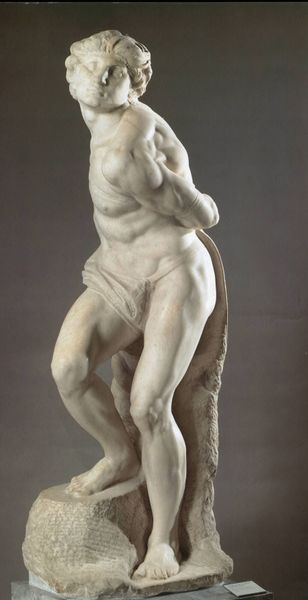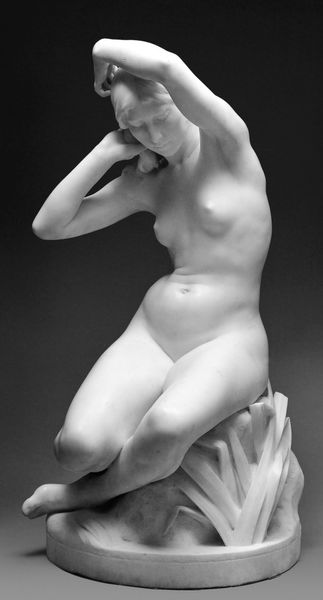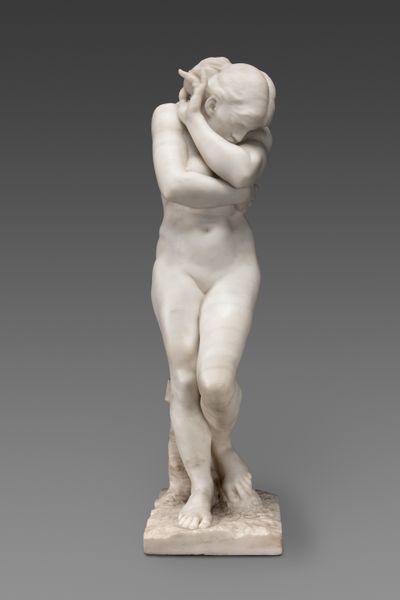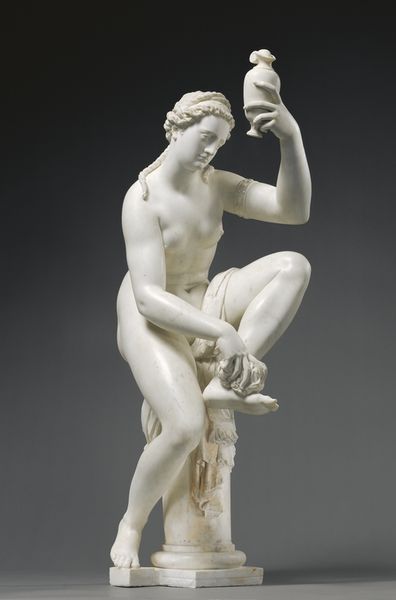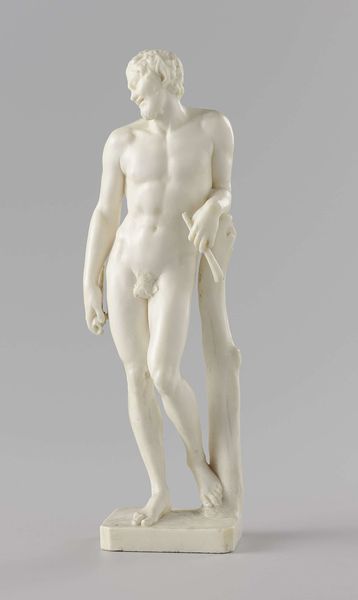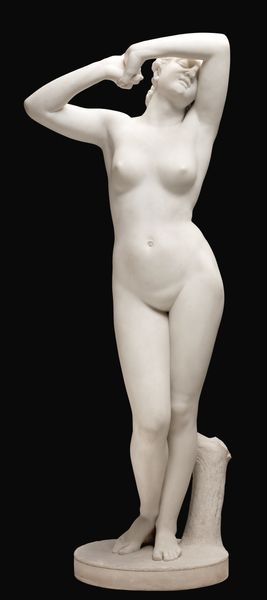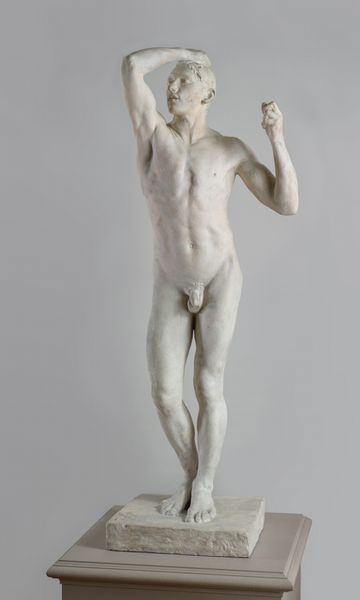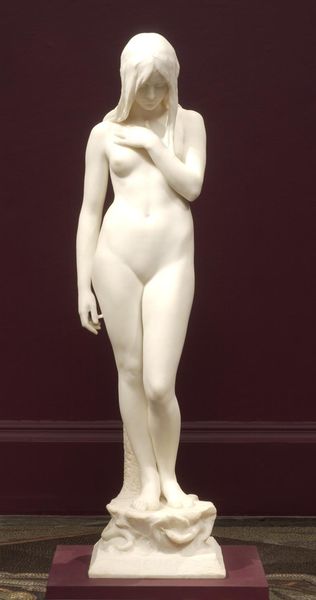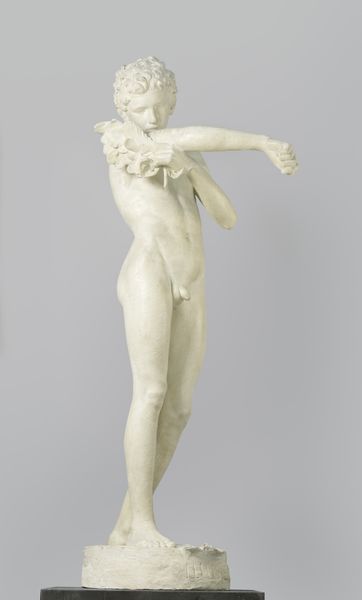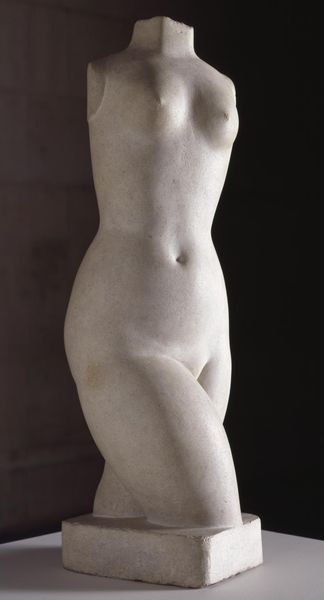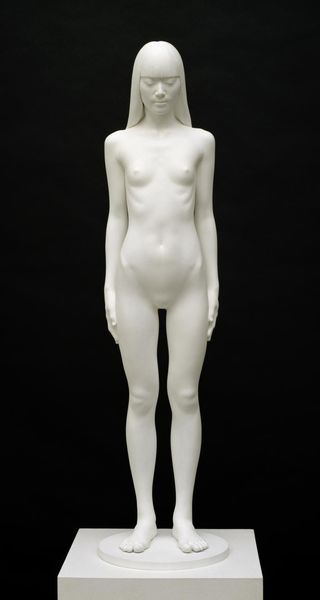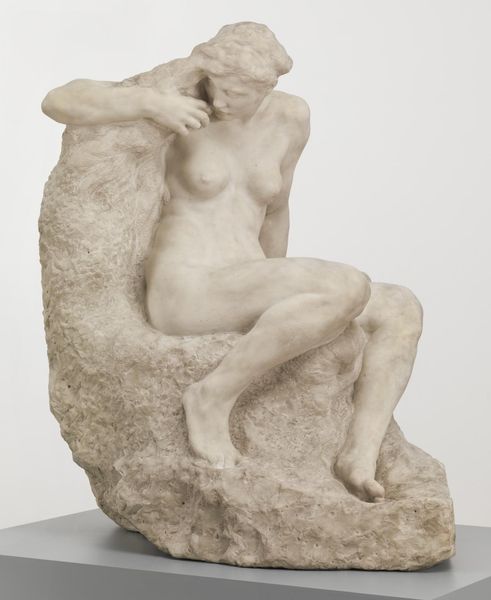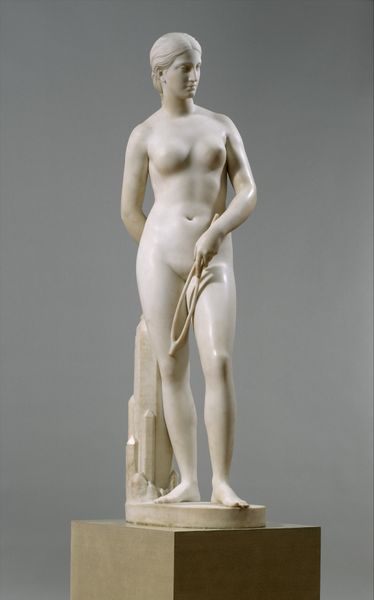
Dimensions: object: 1473 x 819 x 622 mm
Copyright: CC-BY-NC-ND 4.0 DEED, Photo: Tate
Editor: Here we have Sir Bertram Mackennal's marble sculpture, *Diana Wounded*. The smooth texture and the figure's downward gaze create a sense of vulnerability. What strikes you most about the composition? Curator: Observe how the artist utilizes the curve of her spine and the angle of her leg to create a dynamic tension. The line created from her head, down her back, to her heel is a study in classical contrapposto, yet it is subtly destabilized. Do you notice how the artist avoids symmetry, creating a more engaging form? Editor: Yes, I see that now! The asymmetrical pose really brings the sculpture to life. Curator: Precisely. The interplay of light and shadow across the marble further enhances this dynamism, drawing the eye and emphasizing the sculptural form. Editor: I've definitely gained a new appreciation for Mackennal's technical skill and artistic choices! Curator: Indeed, a close analysis reveals the power of form in conveying emotion.
Comments
tate 8 months ago
⋮
http://www.tate.org.uk/art/artworks/mackennal-diana-wounded-n02266
Join the conversation
Join millions of artists and users on Artera today and experience the ultimate creative platform.
tate 8 months ago
⋮
The Australian sculptor Mackennal came to London aged nineteen to study at the Royal Academy Schools, and went from there to work briefly under Rodin in Paris. He made sculpture for war memorials and public buildings in London and Australia. He was knighted in 1921, after designing the tomb of Edward VII. Diana was the moon Goddess, so Mackennal gave her a crescent moon in her hair. She also hunted, hence 'Diana Wounded' ties a bandage to her leg. This action enabled Mackennal to show off a complicated turning pose. Edwardian architects worked well with sculptors such as Mackennal whose confident and Baroque style matched their buildings. Skill in making convincing and varied figures was essential for architectural work. Gallery label, August 2004
